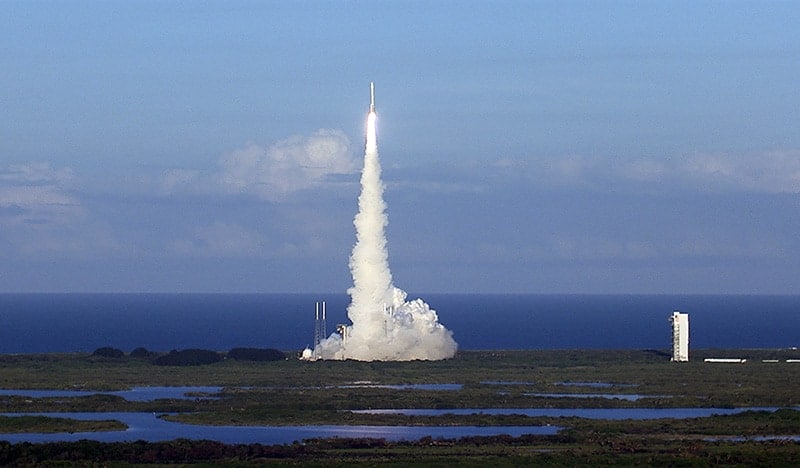
Images gathered by NASA’s OSIRIS-REx mission to the near-Earth asteroid 101955 Bennu show the asteroid ejecting small amounts of material in three distinct events. The observation was made by an international team of astronomers led by Dante Lauretta at the University of Arizona, who believe that it suggests that all similar asteroids may be at least partially active. If correct, this insight could improve our understanding of the evolution of asteroids, and the origins of interplanetary dust.
The OSIRIS-Rex team has also decided that the spacecraft will land at a site on Bennu called “Nightingale”, which is located in a crater high in the asteroid ’s northern hemisphere. There, the spacecraft will obtain a soil sample before taking-off in 2021 for a scheduled return to Earth in 2023. The site was chosen from four perspective locations on the asteroid because it appears to be devoid of large rocks and boulders. It is, however, only about 140 m wide, so NASA scientists must be careful not to set the spacecraft down onto one of the large boulders just outside the perimeter of Nightingale.
Made of boulders
Bennu is a roughly spherical asteroid around 500 m in diameter that circles the Sun in an orbit that allows it to get relatively close to Earth. It is believed to be composed of boulders held together by gravity. Earth-based observations have indicated that Bennu’s composition resembles some active asteroids, which undergo continual mass loss.
NASA’s OSIRIS-REx mission was launched in 2016, with the goal of returning a sample from Bennu’s surface back to Earth in 2023. In preparation, the spacecraft is currently conducting a thorough scan of the asteroid.
When studying the images sent back by OSIRIS-REx, Lauretta’s team spotted evidence for three distinct ejection events between January and February 2019. Each event occurred in the late afternoon in local solar time, and produced around 100 particles with a range of energies and trajectories. By tracking individual particles across multiple images of the largest event, they determined that the ejecta typically were centimetre-sized particles travelling at speeds up to 3 m/s.
Crashing back down
The particles originated from widely varied sites across the asteroid. While some particles escaped into interplanetary space, others orbited Bennu for several days, before crashing back to its surface.
By studying the events, Lauretta and colleagues were able to rule out two ejection mechanisms typically seen in active asteroids. These are ice sublimation, which creates the tails of comets, and rotational disintegration.

NASA launches OSIRIS-REx asteroid mission
That left a variety of possible mechanisms in contention, including impacts from micrometeorites and re-impacting particles, and the loss of water trapped in silicate materials within the asteroid. Furthermore, thermal fracturing could result as Bennu’s boulders are subjected to temperature changes of up to 100 K, over rotational periods of just 4.3 h.
The team’s surprising findings suggest that all asteroids could be active to at least some extent. The theory will be further scrutinised in 2020, when JAXA’s Hayabusa2 mission is expected to return a sample from Ryugu – an asteroid with similar characteristics to Bennu, but with a different composition. Through such future missions, in combination with further Earth-based observations, astronomers could gather important insights into how asteroids evolve, and the ways in which they supply dust to interplanetary space.
The Bennu observations are described in Science.
Science - Latest - Google News
December 13, 2019 at 10:41PM
https://ift.tt/36y7eSq
OSIRIS-REx spacecraft spots particles ejected from asteroid and selects landing spot - physicsworld.com
Science - Latest - Google News
https://ift.tt/2Kb7H4e
Shoes Man Tutorial
Pos News Update
Meme Update
Korean Entertainment News
Japan News Update
Bagikan Berita Ini














0 Response to "OSIRIS-REx spacecraft spots particles ejected from asteroid and selects landing spot - physicsworld.com"
Post a Comment